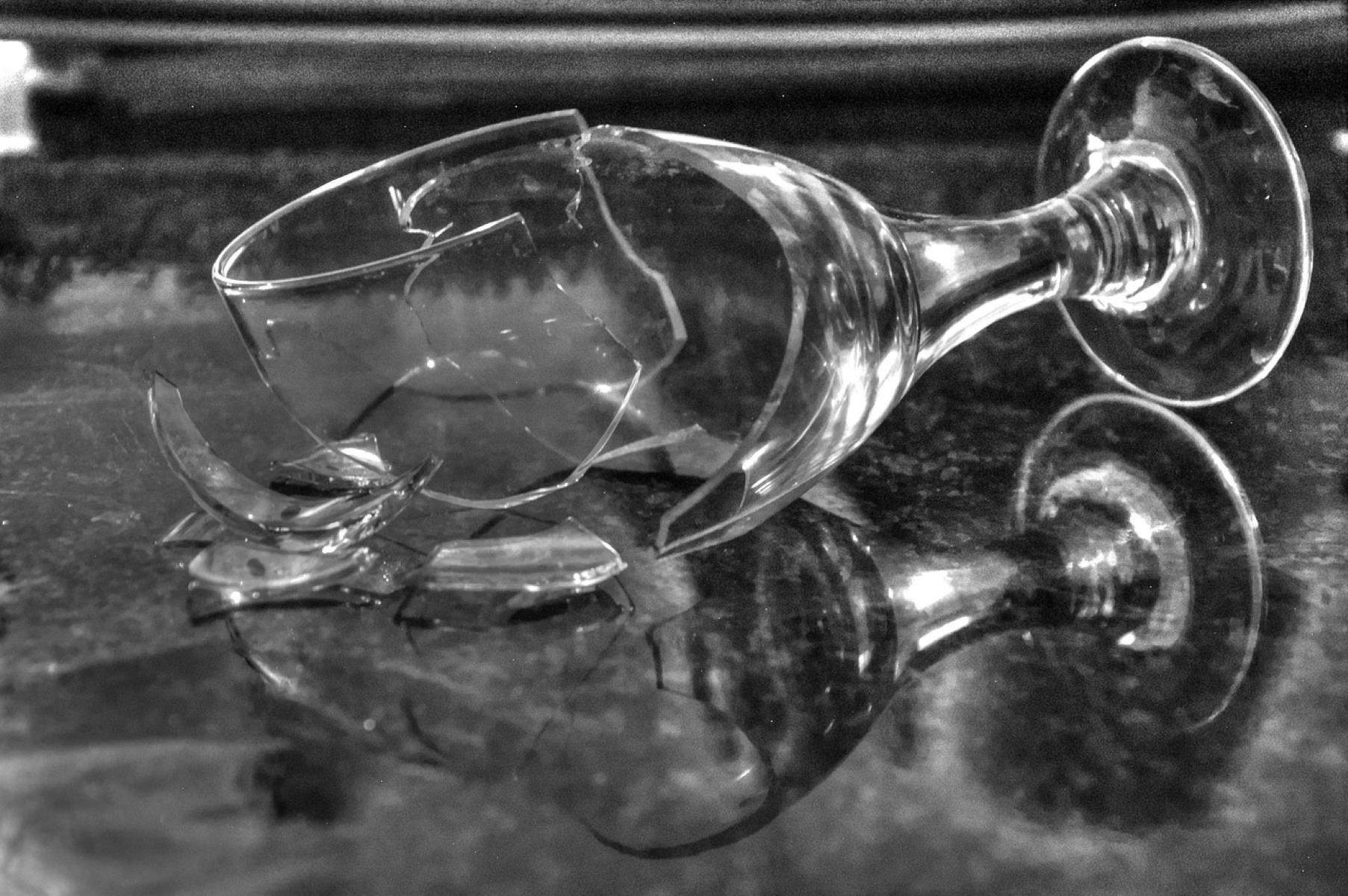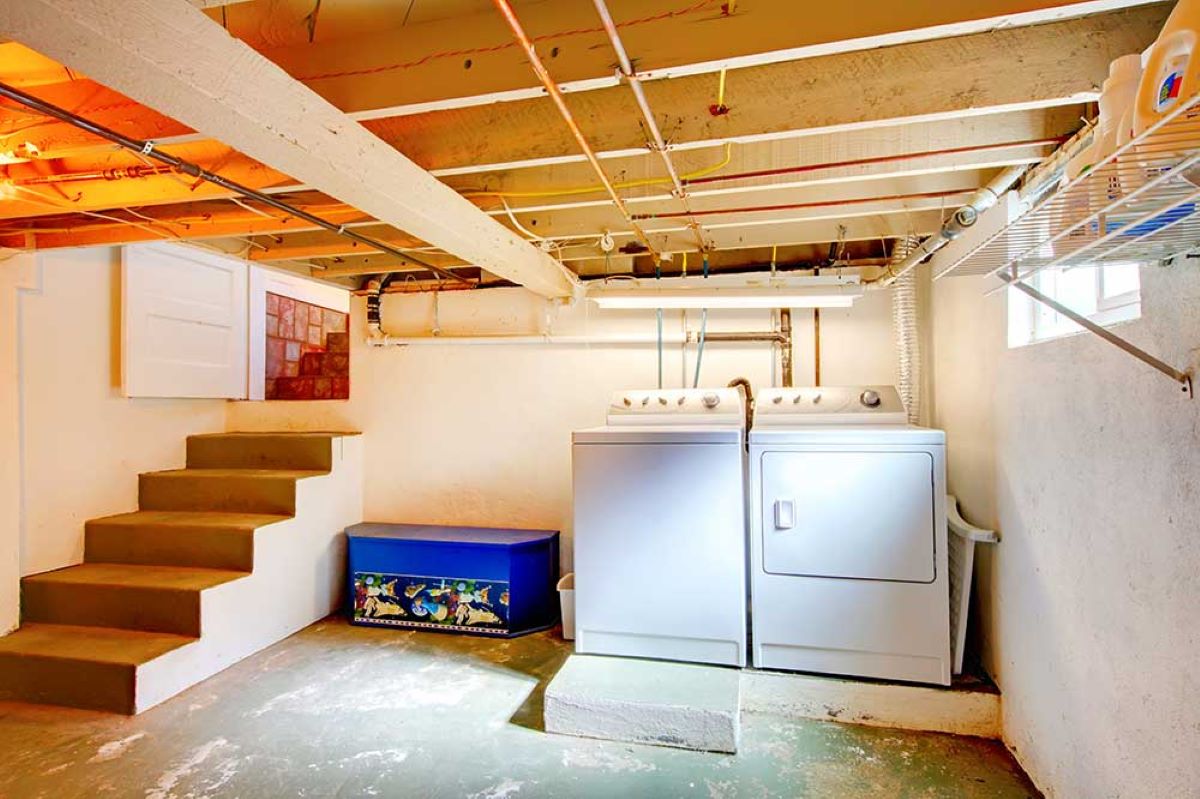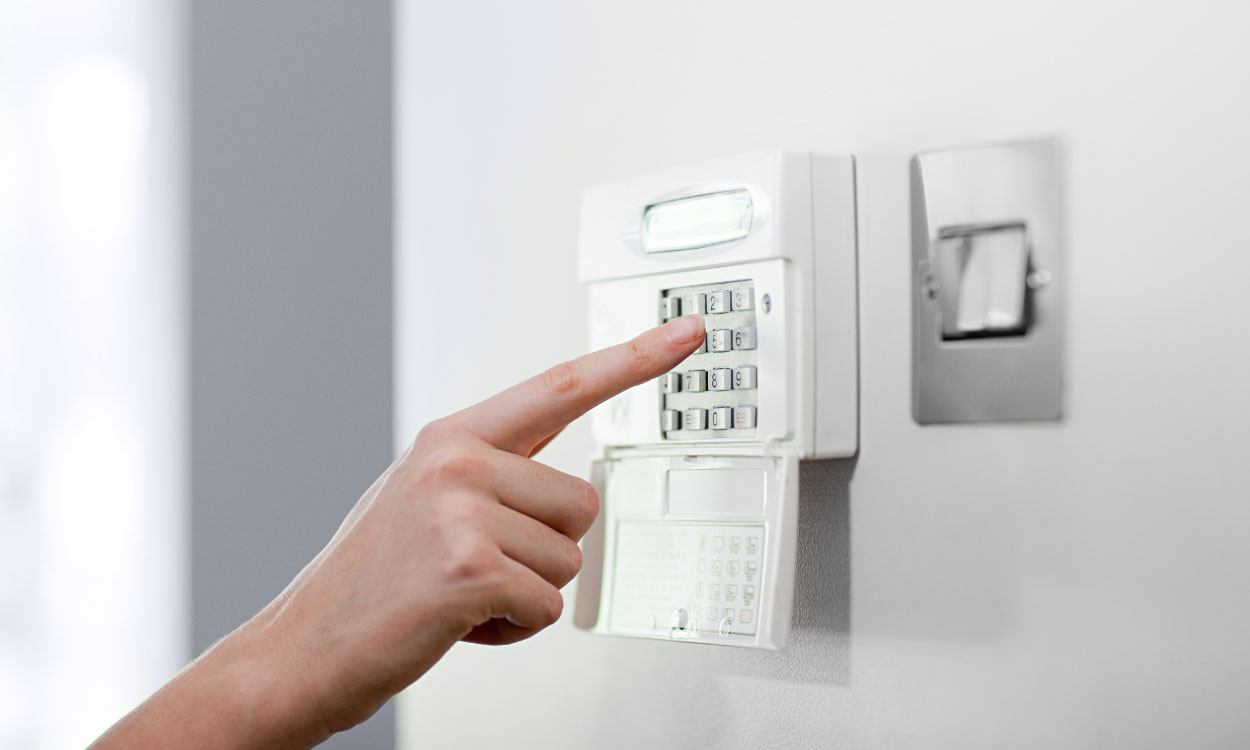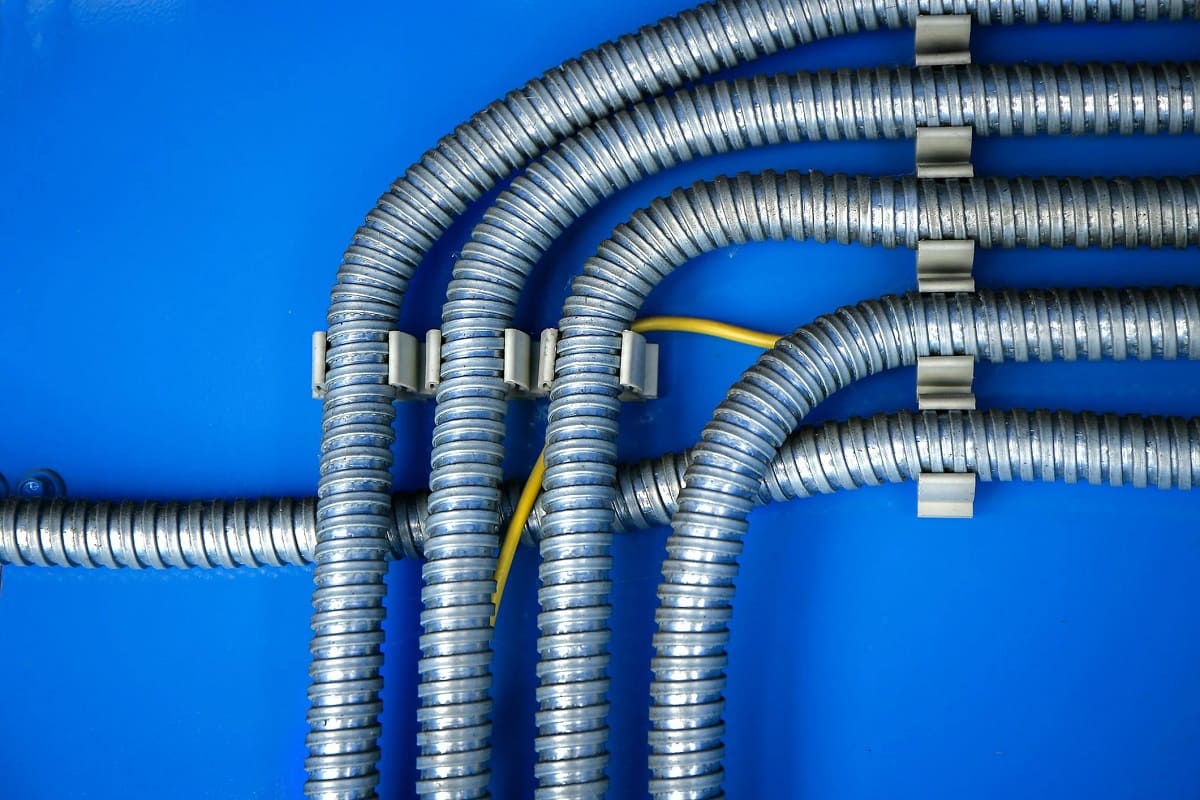Home>Furniture & Design>Interior Design Trends>Why Is Glass So Sharp


Interior Design Trends
Why Is Glass So Sharp
Modified: October 20, 2024
Discover the latest interior design trends and learn why glass is a sharp choice for modern interiors. Explore the allure and functionality of glass in contemporary design.
(Many of the links in this article redirect to a specific reviewed product. Your purchase of these products through affiliate links helps to generate commission for Storables.com, at no extra cost. Learn more)
Introduction
Glass is a ubiquitous material that surrounds us in our daily lives, from the windows in our homes to the screens of our smartphones. Its transparent and versatile nature makes it an essential component of modern architecture and design. However, despite its widespread use, the sharpness of broken glass remains a common concern. Understanding why glass breaks into sharp fragments is crucial for comprehending the potential hazards it poses.
The structure of glass, the process of its breakage, and the resulting sharp edges are all interconnected elements that contribute to its unique properties. By delving into the intricacies of glass, we can gain a deeper appreciation for its characteristics and the precautions necessary to mitigate the risks associated with its sharpness.
Glass, often perceived as fragile, possesses a remarkable internal structure that gives it strength and resilience. When subjected to external forces, such as impact or stress, the molecular arrangement of glass undergoes a transformation, leading to its fracture. This fracture pattern, in turn, influences the formation of sharp edges, which can pose significant dangers if not handled with care.
In this article, we will explore the fascinating world of glass, unraveling the science behind its sharpness and the potential hazards it presents. By examining the structure of glass, the mechanisms of its breakage, and the implications of its sharp edges, we aim to shed light on the enigmatic nature of this ubiquitous material. Join us on this journey as we uncover the secrets of glass and gain a deeper understanding of why it breaks into sharp fragments.
Key Takeaways:
- Glass breaks into sharp fragments due to its unique structure and the erratic propagation of cracks, posing risks of lacerations and puncture wounds. Understanding its sharpness is crucial for safe handling.
- The dangers of sharp glass extend beyond physical injuries to include contamination and psychological impacts. Proactive risk mitigation and safety awareness are essential for creating safer environments.
Read more: Why Is Steuben Glass So Expensive
The Structure of Glass
Glass, often perceived as fragile, possesses a remarkable internal structure that gives it strength and resilience. Unlike crystalline materials with a well-defined atomic arrangement, glass is an amorphous solid, lacking the long-range order found in crystals. This unique structure contributes to both its transparency and its propensity to break into sharp fragments.
At the molecular level, the structure of glass is characterized by a disordered arrangement of atoms, resembling a frozen liquid rather than a typical solid. This lack of a regular crystalline lattice results in the absence of cleavage planes, which are prevalent in crystalline materials and contribute to their predictable fracture patterns. In contrast, the disordered nature of glass impedes the propagation of cracks, making it more resistant to fracture initiation.
The absence of a crystalline structure in glass is attributed to the rapid cooling of molten material, a process known as vitrification. When molten glass is cooled quickly, the atoms are unable to arrange themselves into a regular crystalline lattice, leading to the formation of an amorphous solid. This rapid solidification traps the atoms in a disordered state, resulting in the characteristic structure of glass.
Furthermore, the molecular arrangement of glass imparts it with unique mechanical properties. The absence of a well-defined atomic arrangement allows glass to deform plastically under stress, enabling it to withstand significant external forces before fracturing. This plastic deformation, coupled with the absence of cleavage planes, contributes to the toughness of glass, making it resistant to crack propagation.
The structural intricacies of glass not only influence its mechanical properties but also play a crucial role in determining the nature of its fracture. When subjected to external forces, the disordered molecular arrangement of glass allows cracks to propagate in a complex and unpredictable manner, leading to the formation of sharp edges upon fracture. This fracture pattern, characterized by the generation of numerous microcracks and the rapid propagation of the main crack, contributes to the sharpness of broken glass.
In essence, the unique structure of glass, characterized by its amorphous nature and lack of a crystalline lattice, underpins its mechanical properties and fracture behavior. Understanding the molecular arrangement of glass provides valuable insights into its strength, resilience, and propensity to break into sharp fragments, laying the foundation for comprehending the sharpness of broken glass and the potential hazards it presents.
The Process of Glass Breakage
The process of glass breakage is a complex phenomenon influenced by various factors, including external forces, material properties, and the structural characteristics of glass. When subjected to an impact or stress, the molecular arrangement of glass undergoes a transformation, leading to its fracture. This process unfolds in distinct stages, each contributing to the formation of sharp fragments and the unique fracture pattern exhibited by glass.
The initial stage of glass breakage involves the application of an external force, such as a sudden impact or mechanical stress, which disrupts the equilibrium of the glass structure. This force induces localized deformation within the material, initiating the formation of microcracks at the point of impact. These microcracks serve as nucleation sites for the propagation of the main crack, marking the onset of fracture within the glass.
As the external force continues to act on the glass, the main crack propagates rapidly through the material, guided by the inherent structural irregularities and the absence of cleavage planes. The disordered molecular arrangement of glass impedes the orderly propagation of the crack, causing it to navigate through the material in a complex and unpredictable manner. This erratic propagation results in the generation of numerous microcracks, further contributing to the fragmentation of the glass.
The final stage of glass breakage culminates in the complete separation of the fractured segments, resulting in the formation of sharp edges and jagged fragments. The rapid propagation of the main crack, coupled with the generation of microcracks, leads to the creation of sharp and irregular surfaces along the fracture lines. These sharp edges are a direct consequence of the molecular disarray within the glass, as well as the intricate fracture pattern induced by the propagation of the main crack and the accompanying microcracks.
In essence, the process of glass breakage is a multi-faceted sequence of events driven by the interplay of external forces and the unique structural characteristics of glass. The initiation and propagation of cracks, coupled with the absence of cleavage planes and the disordered molecular arrangement, contribute to the formation of sharp fragments and the inherent sharpness of broken glass. Understanding the intricacies of the glass breakage process provides valuable insights into the nature of fractured glass and the potential hazards posed by its sharp edges.
When handling glass, always use gloves or a cloth to avoid getting cut. Be cautious when handling broken glass and dispose of it properly to prevent accidents.
The Sharpness of Glass
The sharpness of broken glass is a result of its unique fracture pattern and the inherent structural characteristics of the material. When glass fractures, it exhibits a propensity to form sharp edges and jagged fragments, posing potential hazards to individuals who come into contact with the broken pieces. Understanding the factors that contribute to the sharpness of glass is essential for comprehending the risks associated with handling fractured glass and implementing appropriate safety measures.
The molecular arrangement of glass, characterized by its amorphous nature and lack of a crystalline lattice, plays a pivotal role in determining the sharpness of its fractured edges. Unlike crystalline materials with well-defined cleavage planes, glass lacks a regular atomic structure, impeding the orderly propagation of cracks and leading to the formation of irregular and sharp fragments upon fracture. The absence of cleavage planes in glass prevents the formation of smooth fracture surfaces, resulting in the generation of sharp and jagged edges along the fractured segments.
Furthermore, the rapid propagation of cracks within glass, guided by the disordered molecular arrangement, contributes to the sharpness of its fractured edges. When subjected to external forces, the main crack in glass propagates rapidly and erratically, generating numerous microcracks along its path. This complex fracture pattern leads to the formation of sharp and irregular surfaces, enhancing the sharpness of the fractured glass. The presence of microcracks, coupled with the absence of a crystalline structure, amplifies the sharpness of the broken glass, increasing the potential risks associated with handling and coming into contact with the fractured edges.
The sharpness of glass fragments poses significant dangers, as the jagged edges can cause lacerations and puncture wounds upon contact. The potential for injury escalates when individuals are exposed to broken glass in various settings, such as automotive accidents, shattered windows, or damaged glassware. The sharp fragments produced upon glass fracture necessitate caution and proper handling to mitigate the risks of injury and ensure the safe disposal of the broken pieces.
In essence, the sharpness of broken glass is a consequence of its unique fracture pattern, driven by the disordered molecular arrangement and the absence of cleavage planes. The jagged and irregular edges formed upon glass fracture underscore the potential hazards associated with handling fractured glass, emphasizing the importance of exercising caution and implementing safety protocols when dealing with broken glass. Understanding the sharpness of glass provides valuable insights into the risks posed by fractured edges and the measures necessary to ensure the safe management of broken glass.
The Dangers of Sharp Glass
The dangers posed by sharp glass fragments are significant and multifaceted, encompassing a range of potential hazards and risks to individuals who come into contact with broken glass. The inherent sharpness of fractured glass edges, characterized by their jagged and irregular nature, increases the likelihood of lacerations, puncture wounds, and other injuries. When left unaddressed, these injuries can have serious implications for the safety and well-being of individuals, underscoring the critical need to recognize and mitigate the dangers associated with sharp glass.
One of the primary dangers of sharp glass lies in its potential to cause severe lacerations upon contact. The jagged edges and pointed fragments resulting from glass fracture possess the capacity to inflict deep and penetrating wounds, leading to significant bleeding and tissue damage. In settings where broken glass is prevalent, such as automotive accidents or shattered windows, the risk of lacerations escalates, posing a direct threat to the safety of individuals in the vicinity.
Furthermore, the sharpness of glass fragments increases the likelihood of puncture wounds, as the pointed edges can penetrate the skin and underlying tissues upon contact. Puncture wounds caused by sharp glass fragments not only result in immediate injury but also raise concerns regarding the potential for infection and secondary complications. The introduction of foreign particles and contaminants from the fractured glass into the wound site can lead to infections, necessitating prompt medical attention and treatment.
In addition to physical injuries, the presence of sharp glass fragments poses risks of contamination and environmental hazards. Broken glass scattered in public spaces, residential areas, or commercial settings can pose a threat to sanitation and environmental cleanliness. The potential for individuals, including children and pets, to inadvertently come into contact with sharp glass fragments underscores the need for prompt and thorough cleanup to mitigate the risks of injury and contamination.
The dangers of sharp glass extend beyond immediate physical injuries, encompassing psychological and emotional impacts on individuals who encounter broken glass. The fear and anxiety associated with navigating spaces littered with sharp glass fragments can have lasting effects on individuals, influencing their sense of safety and well-being. Addressing the dangers of sharp glass involves not only mitigating physical risks but also alleviating the psychological burden imposed by the presence of fractured glass.
In essence, the dangers of sharp glass are far-reaching, encompassing the risks of lacerations, puncture wounds, contamination, and psychological impacts. Recognizing these dangers is essential for implementing appropriate safety measures, ensuring prompt cleanup and disposal of broken glass, and prioritizing the well-being of individuals in environments where fractured glass poses potential hazards. By acknowledging the dangers of sharp glass, we can work towards creating safer and more secure spaces, minimizing the risks associated with fractured glass and promoting a culture of proactive risk mitigation and safety awareness.
Read more: Why Is Annie Glass So Expensive
Conclusion
In conclusion, the sharpness of broken glass is a result of its unique molecular structure, fracture pattern, and the absence of cleavage planes. The amorphous nature of glass, characterized by its disordered molecular arrangement, contributes to its resilience and transparency while also influencing the sharpness of its fractured edges. The process of glass breakage, driven by external forces and the propagation of cracks, leads to the formation of sharp and irregular fragments, posing potential hazards to individuals who come into contact with the broken pieces.
Understanding the sharpness of glass is essential for recognizing the risks associated with fractured edges and implementing appropriate safety measures. The potential for lacerations, puncture wounds, and environmental contamination necessitates caution and vigilance when dealing with broken glass in various settings. From residential environments to public spaces and commercial establishments, the presence of sharp glass fragments underscores the importance of proactive risk mitigation and safety awareness.
By gaining insights into the structure of glass, the mechanisms of its breakage, and the implications of its sharp edges, we can work towards creating safer and more secure environments. The safe handling, cleanup, and disposal of broken glass are paramount in mitigating the dangers posed by sharp fragments, safeguarding the well-being of individuals and promoting a culture of safety consciousness.
In essence, the sharpness of broken glass serves as a reminder of the potential hazards inherent in fractured edges, urging us to exercise caution, implement safety protocols, and prioritize the safety of individuals in environments where broken glass is prevalent. By acknowledging the sharpness of glass and its associated risks, we can take proactive steps to minimize the dangers posed by fractured edges, fostering a culture of safety and well-being in our surroundings.
Frequently Asked Questions about Why Is Glass So Sharp
Was this page helpful?
At Storables.com, we guarantee accurate and reliable information. Our content, validated by Expert Board Contributors, is crafted following stringent Editorial Policies. We're committed to providing you with well-researched, expert-backed insights for all your informational needs.















0 thoughts on “Why Is Glass So Sharp”